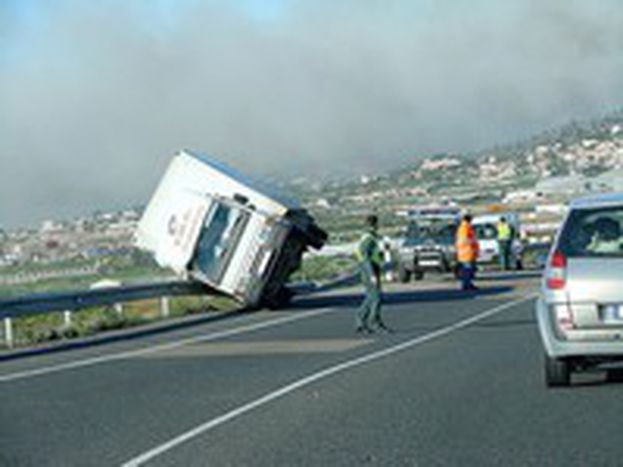
Let’s all go for a drive
Published on
Translation by:
Rebecca Caulfield60% of Europeans choose the summertime to escape from their daily routine and go on holiday. Of those, 55% take their car according to Eurostat
Spain, 1 August on the N-340 road. For some it is nothing more than a date and a motorway. However, for the millions of tourists who know it, it is like the title of a horror film.
German and British tourists who pack the beaches in southern Spain, north Africans who return home for a few days, and Spaniards who travel to enjoy a holiday in their own country have all suffered the same fate on the N-340: endless delays, stuck in vehicles with temperatures reaching 40°C, and road works begun over ten years ago which still haven’t been finished.
From Cadiz, in the south of the Iberian peninsula, to Barcelona in the north-east, the N-340 goes through the cities of Tarifa and Algeciras, where Europe and Africa almost touch. Only 14 kilometers separate the N-340 and the continent of Africa and it is on this stretch that the worst traffic jams occur. Here, for long stretches the motorway is reduced to a single lane in each direction. The Spanish Royal Automobile Club issued a study at the end of 2006 declaring the N-340 to be the most dangerous road in Spain.
Are Europeans pulling their weight?
Although it is a problem that affects us all as Europeans, the EU has little to say on the matter. Roadworks continue throughout Europe with each country competing for funds. Even though a Tourism and Transport Committee exists within the European Parliament, very little is said or done. The EU institutions only adopt policies which are not binding, such as the Road Safety Action Programme or the Road Safety Charter. Just recently, the first legislative initiatives which the EU could have used to order the improvement of Europe’s roads were withdrawn. In them, evaluations were made based on periods of impact, audits and inspections of Europe’s roads. However, a group of MEPs, formed solely by members of European People’s Party, rejected it arguing an excessive increase in the amount of bureaucracy.
The paradox is that the majority using the roads should be thankful for the millions that have come from Brussels. The main dangers of the N-340 have decreased in recent years thanks to the funds that have been injected into Spain from the European Commission’s European Regional Development Fund (ERDF), which is set up for funding infrastructure work. In 2005 alone, Spain received £5, 350,000 (€7,878,000) of European funds (of which
£2,293,900 (€3,378,000) were from ERDF) – 24% of the total distributed within the member states. These injections have played an enormous part in converting the N-340 into a dual carriageway on both sides.
Listen to Mr. Visón
Of the top ten tourist destinations in the world, six of them are in Europe: France, Spain, Italy, UK, Austria and Germany. The A6, which connects Paris to Marseille, is the most widely used in France. If commuters want to avoid accidents or delays on it, the best thing to do is to ask Mr. Visón. The French Minister of Sustainable Ecological Development navigates around the internet and informs people of heavy traffic and congestion. According to Mr. Visón’s predictions for 2007, the French will choose Saturday 28 July and Saturday 4 August as their preferred dates of travel. The Spanish, however, seem to be in more of a rush and they have their foot on the accelerator the day their holidays begin.
Sustainability: how can it be achieved?
Who is to blame, the roads or the cars? The EU is currently part of a fight against climate change, to the chagrin of some EU politicians promoting ‘tourism without breaks’ - free flowing travel within Europe. Statistics show that within the EU, 80% of the contaminated gases emitted into the atmosphere come from automobiles. However, more and more roads are being built, in cities and in the countryside, as well as close to beaches and even on the sea shore, as in Holland.
Translated from Vamos de paseo con el coche feo



